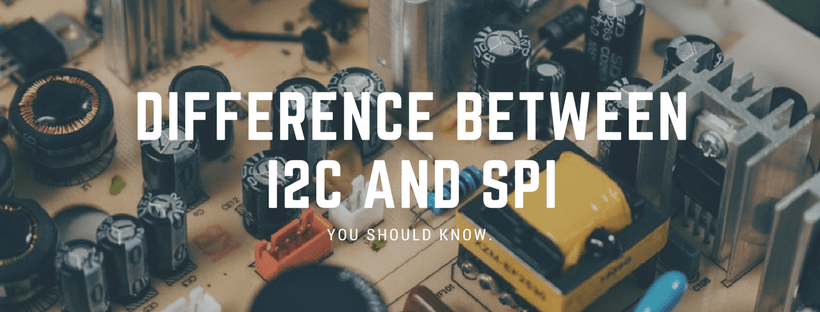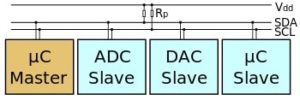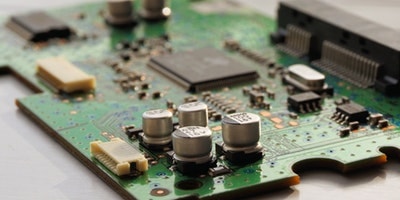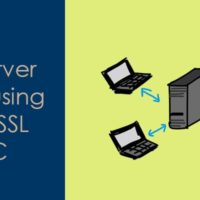
There is a lot of serial communication protocol but in which I2C and SPI are very famous, In this article, I will discuss the difference between I2C and SPI ( I2C vs SPI ). I2C and SPI both are bus protocol to allow the user for short-distance, serial data transfer. I2C is two-wire communication made by Philips (Nowadays NXP) and SPI is made by Motorola. Both protocols are commonly used in electronic devices like smartphones, TV, and laptops to control peripherals like power management chips, memory devices, input devices, etc.
What is I2C?
I2C is a serial communication protocol. It provides good support to the slow devices, for example, EEPROM, ADC, and RTC etc.I2c are not only used with the single board but also used with the other external components which have connected with boards through the cables.
I2C is basically a two-wire communication protocol. It uses only two-wire for communication. In which one wire is used for the data (SDA) and other wire is used for the clock (SCL).
In I2C, both buses are bidirectional, which means the master able to send and receive the data from the slave. The clock bus is controlled by the master but in some situations slave is also able to suppress the clock signal, but we will discuss it later.

Additionally, an I2C bus is used in the various control architecture, for example, SMBus (System Management Bus), PMBus (Power Management Bus), IPMI (Intelligent Platform Management Interface), etc.
Read the article to know I2C protocol in detail: Understanding of I2C Protocol.
Advantages of I2C communication protocol
There is a lot of advantage of I2C protocol which makes the user helpless to use the I2C protocol in many applications.
- It is the synchronous communication protocol, so no need of precise oscillators for the master and slave.
- It requires only two-wire, one wire for the data (SDA), and other wire for the clock (SCL).
- It provides the flexibility to the user to select the transmission rate as per the requirements.
- In I2C Bus, each device on the bus is independently addressable.
- It follows the master and slave relationships.
- It has the capability to handle multiple masters and multiple slaves on the I2C Bus.
- I2C has some important features like arbitration, clock synchronization, and clock stretching.
- I2C provides ACK/NACK (acknowledgment/ Not-acknowledgement) features that provide help in error handling.
Some important limitation of I2C communication protocol
An I2C protocol has a lot of advantage but beside it, I2C has a few limitations.
- It consumes more power than other serial communication busses due to open-drain topology.
- It is good only for a short distance.
- I2C protocol has some limitation for the number of slaves, the number of the slave depends on the capacitance of the I2C bus.
- It only provides a few limited communication speed like 100 kbit/s,400 kbit/s, etc.
- In I2c, devices can set their communication speed, slower operational devices can delay the operation of faster speed devices.
What is SPI?
The serial peripheral interface is four wire-based full-duplex communication protocol these wire generally known as MOSI (master out slave in), MISO (master in slave out), SCL (a serial clock which produces by the master) and SS (slave select line which use to select specific slave during the communication).

SPI follows the master and slave architecture and communication is always started by the master. Like I2C it is also a synchronous communication protocol because the clock is shared by the master and slave.
SPI is supported only multi-slave does not support multi-master and slaves are selected by the slave select signal. In SPI during the communication data is shifted out from the master and shifted into the slave vice- versa through the shift register.
Advantages of SPI communication protocol
- There is no start and stop bits, so the data can be streamed continuously without interruption.
- It supports full-duplex.
- No need for precision oscillators in slave devices as it uses a master’s clock.
- No complicated slave addressing system like I2C.
- Higher data transfer rate than I2C (almost twice as fast).
- Separate MISO and MOSI lines, so data can be sent and received at the same time.
- Simple software implementation.
Disadvantages of SPI communication protocol
- If there is more than one slave in communication then the wiring will be complex.
- Uses four wires (I2C and UARTs use two).
- No acknowledgment that the data has been successfully received (I2C has this).
- No form of error checking like the parity bit in UART.
- It only allows for a single master.
If you want to learn STM32 from scratch, you should follow this course “Mastering Microcontroller with Embedded Driver Development“. The course contains video lectures of 18.5-hours length covering all topics like, Microcontroller & Peripheral Driver Development for STM32 GPIO, I2C, SPI, USART using Embedded C.
Enroll In Course
In the embedded system, I2C and SPI both play an important role. Both communication protocols are the example of synchronous communication but still, both have some important differences. In the below table, I have pointed out some common differences between SPI and I2C ( SPI vs I2C ).
The important difference between I2C and SPI ( I2C vs SPI ) communication protocol.
I2C |
SPI |
| I2C can be multi-master and multi-slave, which means there can be more than one master and slave attached to the I2C bus.
|
SPI can be multi-save but does not a multi-master serial protocol, which means there can be only one master attached to the SPI bus. |
| I2C is a half-duplex communication protocol.
|
SPI is a full-duplex commination protocol. |
| I2C has the feature of clock stretching, which means if the slave cannot able to send fast data as fast enough then it suppresses the clock to stop the communication.
|
Clock stretching is not the feature of SPI. |
| I2C is used only two wire for the communication, one wire is used for the data and the second wire is used for the clock.
|
SPI needs three or four-wire for communication ((depends on requirement), MOSI, MISO, SCL, and Chip-select pin. |
| I2C is slower than SPI.
|
In comparison to I2C, SPI is faster. |
| I2C draws more power than SPI.
|
Draws less power as compared to I2C. |
| I2C is less susceptible to noise than SPI.
|
SPI is more susceptible to noise than I2C. |
| I2C is cheaper to implement than the SPI communication protocol.
|
Costly as compared to I2C. |
| I2C work on wire and logic and it has a pull-up resistor.
|
There is no requirement of a pull-up resistor in the case of the SPI. |
| In I2C communication we get the acknowledgment bit after each byte.
|
Acknowledgment bit is not supported by the SPI communication protocol. |
| I2C ensures that the data sent is received by the slave device.
|
SPI does not verify that data is received correctly or not. |
| I2C support multi-master communication.
|
SPI does not support multi-master communication. |
| I2C is a multi-master communication protocol that’s why it has the feature of arbitration.
|
SPI is not a multi-master communication protocol, so it does not consist of the properties of arbitration. |
| I2C is the address base bus protocol, you have to send the address of the slave for the communication.
|
In the case of the SPI, you have to select the slave using the slave select pin for the communication. |
| I2C has some extra overhead due to start and stop bits.
|
SPI does not have a start and stop bits. |
| I2C supports multiple devices on the same bus without any additional select lines (work on the basis of device address).
|
SPI requires additional signal (slave select lines) lines to manage multiple devices on the same bus. |
| I2C is better for long-distance.
|
SPI is better for a short distance. |
| I2C is developed by NXP.
|
SPI is developed by Motorola. |
Recommended Post
- Understanding of I2C protocol.
- Best mouse for programming and coding
- Difference between UART vs USART (UART vs USART).
- Difference between RS232 and RS485 (RS232 vs RS485).
- Introduction of SPI communication protocol.
- EEPROM Interfacing with PIC Microcontroller – I2C Based.
- RTC DS1307 Interfacing with PIC Microcontroller.
- Interfacing EEPROM with 8051 Microcontroller – I2C Based.
- 100 embedded C interview Questions.
- 100 C interview Questions.
- I2C interview Questions
- Interview questions on bitwise operators in C
- C++ Interview Questions.
- 10 questions about dynamic memory allocation.
- Can protocol interview questions.
- File handling in C.
- Pointer in C.
- C format specifiers.






Why SPI protocal speed is so high compared to I2C
I2C is quite involved, supporting multiple masters on the bus. Which causes significant overhead in the bus protocol, an ACK for every byte and intentional delays to arbitrate access to the bus. Also a set maximum bus rate, 100 kHz in the original spec, 400 kHz is common today, additional 10 kHz low-speed and 3.4 Mhz high-speed modes, the 2012 spec defines a 5 Mhz ultra-fast mode.
SPI is much simpler, a single master with no bus protocol beyond a chip select and no set maximum bus rate. If the distances are short then you can go as fast as you dare. Quite fast on an interconnect between chips that are less than an inch apart.
Ref:https://stackoverflow.com/questions/21848629/what-makes-spi-faster-than-i2c-protocol
Provide SPI protocol details…
As soon as possible, I will publish article related to SPI protocol.I had published article on I2C, if you want, you can see:https://aticleworld.com/i2c-bus-protocol-and-interface/
Need node topics on embedded c bro..you are doing amazing work..
Thanks, Raja.
Kindly put topics on CAN Controller.Thank You for your efforts.
Keep going
Thanks
As u said for long distance i2c preferred and for short distance preferred SPI right..but i have some doubts if I same distance for spi and i2c then which one I need to be prefer?
It totally depends on the chipset and requirement.
Thank you for this helpful article. I wanted to understand the key differences between I2C and SPI and that is exactly what your article set out very clearly.
Thanks Simon.
In SPI there is no Acknowledgement bit. Can you please elaborate on this. Specifically does it mean that our micro-controller (Raspberry Pi) wont be able to receive data at fixed sampling rate?
In the case of I2c, you will get Acknowledgement after each byte but in SPI you will not get such type of Acknowledgement.SPI does not have an acknowledgment mechanism to confirm receipt of data. But you can do some tweak to verify that your data has been transmitted or not in SPI.